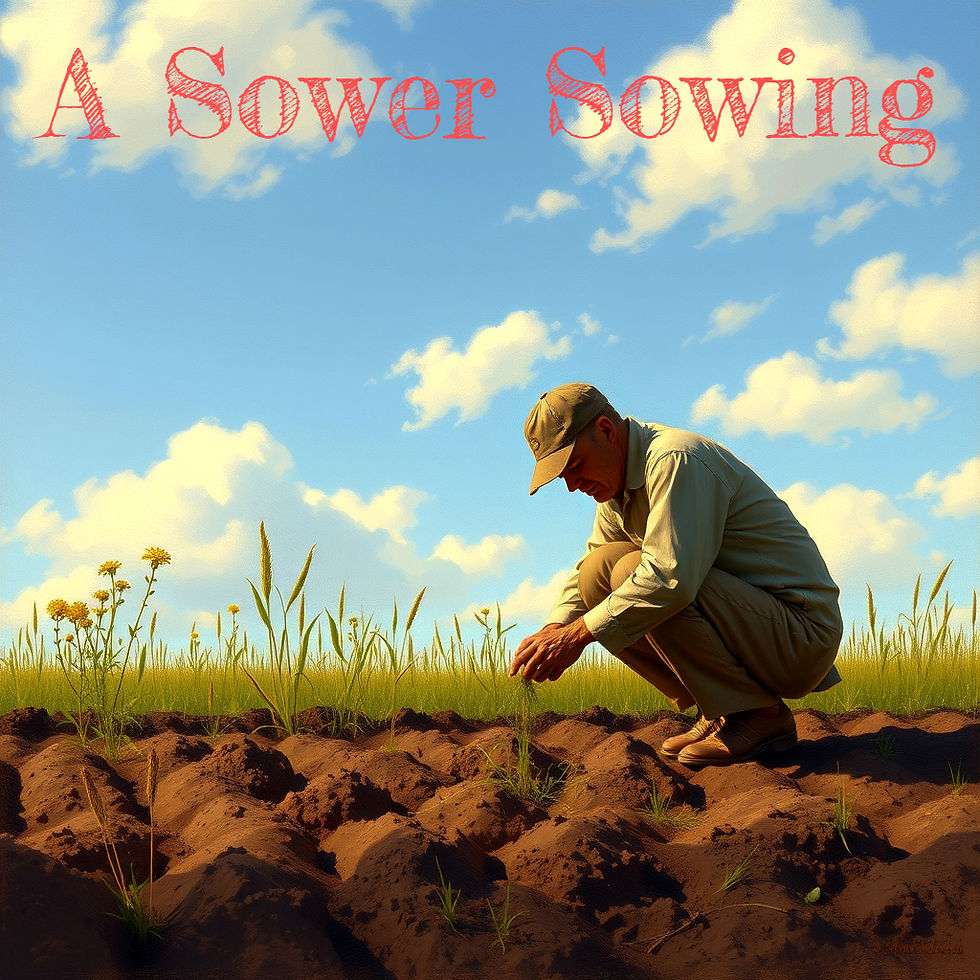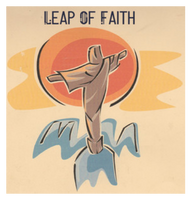Message of the Week
- LeapofFaith

- Jul 22
- 5 min read
Updated: Aug 12
The Little White Community Church
Scripture: Mark 4: 1-20 July 27, 2025
Message: “The Parable of the Sower!”
by Pastor George Gnade

Introduction:
1. As most of you know, we are studying some of the highlights of the Gospel according to Mark. In Mark 1:21, he shares how Jesus regularly went into the synagogue on the Sabbath to teach the people.
a. Then in vs. 22 he writes: “The people were amazed at His teachings because He taught them as one who had authority, not like the teachers of the law.”
b. Jesus did many amazing things, but it was not meant to be a show. He was always using His miracles as an opportunity to preach and teach the people.
2. Just as the people were amazed at His miracles, they were equally amazed at His teachings.
a. He said things that upset their leaders. At one setting, He said the Son of Man had the authority to forgive sins. To prove it, He healed the man that He forgave (Mark 2: 1-12).
b. On another occasion, in Mark 2:23-29, He told the Pharisees that He had the right to give His disciples the freedom to gather food so they could eat, even on the Sabbath, because “the Son of Man was Lord, even of the Sabbath.”
3. When Jesus was successful and drawing a crowd, the disciples expected Him to keep ministering right where He was. But Jesus slipped away during the night, and when His disciples found Him, He told them He had to move on because He wanted to reach other people in other villages as well (Mark 1:38).
a. Clearly, He did not come to be a local preacher. He came to reach all of the Jewish people.
b. His style of teaching and preaching varied with the crowd. In large groups, Jesus preferred to use parables. But when He was teaching His disciples or an individual, He often explained things in more detail.
4. Besides that, He was just as comfortable teaching on a hillside or beside a lake as He was teaching in the synago-gue. In Mark 4:1-20, He was preaching from a boat to a large crowd on the shore.
A. Let us look at this passage in more detail.
1. In Mark 4:2, it says: “He taught them many things by parables and in His teaching said…” The way that is worded, it implies this was just a sample of what He taught them. Considering how He went from place to place, we should expect Him to repeat some of the things He said, depending on where He went.
2. This parable is called “the parable of the sower.” It is an illustration from everyday life that they could identify with. It concerns a farmer who went forth to sow seed in his fields, knowing it would land on different kinds of soil.
a. Some landed on the path “and the birds came and ate it up” (Mark 4:4).
b. “Some landed on rocky places where it didn’t have much soil. When the sun came up, it sprang up quickly because the soil was shallow. But when the sun came up, the plants were scorched. They withered because they didn’t have much soil” (Mark 4:5-6).
c. “Other seed fell among thorns, which grew up and choked the plants so they did not produce much grain”
(vs. 7).
d. Finally, in vs. 8, it says: “Still other seed fell on good soil. It came up, grew, and produced a crop, multiplying thirty, sixty, or even a hundred times.”
3. Anyone listening could visualize what happened and why. But what did it mean? Jesus followed it in Mark 4:21-24 with another parable about a lamp that you place on a stand so that it will bring forth light into the room.
a. Why would you do that? It is so you can see whatever was hidden. You do it to reveal and bring out into the open whatever you want them to see or understand.
b. Then comes the punch line: “If anyone has ears to hear, let him hear.”
4. The Word of God brings light. Whoever is preaching or teaching is like the lamp. As Jesus taught the people, He was enlightening them.
a. In Rev. 1:19-20, we are told that Jesus holds the seven golden lampstands in His hands. The seven lampstands receive their light from Jesus through the Word of God. The lampstands represent seven churches which all have strengths and weaknesses. The seven churches are a picture of the whole church.
b. The effectiveness of the church is dependent on how clearly the Word of God is preached and how well the Lord Jesus is lifted up so that His light can enlighten us. As Jesus put it: “If anyone has ears to hear, let him hear.” Sadly, everyone is not ready to hear.

B. Consider the meaning of the parable of the sower that Jesus explained to us.
1. Some seed, representing the Word of God, fell on a hard path. That is because some hearts are hardened.
a. For example, most of the Pharisees were like that. No one was going to change their minds. They were against Him, not for Him.
b. But Nicodemus (John 3) was an exception. He didn’t understand it all, but he wanted to learn more. As a result, Jesus’ words helped to enlighten him.
c. One reason why Jesus spoke in parables was to help differentiate between those whose hearts were hardened and those who were eager to learn more.
2. Other seed fell on rocky ground with shallow soil. Jesus said that represented people who at first seemed eager to hear. But they had not really counted the cost. Their initial enthusiasm doesn’t last.
a. When trouble arises or they are faced with persecution, “they quickly fall away.”
b. This especially frustrates pastors. Just when they think they have found an enthusiastic person who responds and makes a commitment to Christ, that person disappoints them by falling away.
c. Only God knows the heart. But some people accept Christ because they want to go to heaven, not because they really appreciate what the Lord Jesus has done for them. If they have to choose, they will disappear back into the world instead of standing up for Jesus and developing their relationship with Him.
3. Other seed lands among thorns. As the seed grows, the thorns choke and hinder the growth of the plant. It does not bring forth fruit either.
a. In Mark 4:19, Jesus said this group of individuals hear the Word but “the worries of this life, the deceitful-ness of wealth, and the desire for other things come in and choke the Word, making it unfruitful.”
b. If trials and persecution often affect people overseas, the thorns caused by worries and the temp-tations of pleasure and the lusts of the flesh often affect people in America. They may be Christians, but they don’t bear much fruit.
4. But here is the real surprise! In spite of all these obstacles, some seed falls on hearts that are open and ready to receive God’s Word and bring forth much fruit – some thirty or sixty or even a hundred fold.

In conclusion:
Never think Jesus is defeated, just because you see all the problems. If you look more closely, the Holy Spirit is still accomplishing great things. You just need eyes to see and ears to hear. Amen.








Thank you Pastor for this message. The graphical pictures explain well.